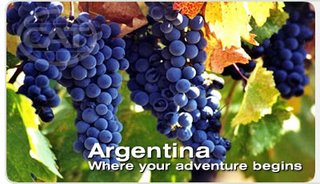LONDON TESCO WINE CLUB FAIR: EVERY TIPPLE HELPS

The London Tesco Wine Club Fair is a well-established annual event which never disappoints. More informal than the invitation-only events, it’s a great opportunity for all wine lovers, experts and amateurs alike, to discover some great bargains and have a great time while they’re at it. There were about 300 wines and beers available for tasting and everyone got stuck in. The event was superbly organised and the highlight of the day were the master classes run by Charles Metcalfe, Co-Chairman of the International Wine Challenge. Highly entertaining, engaging and informative.
The wine of the day for me was Tesco Finest San Juan Shiraz 2005 produced by Bodegas Salentein (Angentina). Priced at £7.99, it’s currently on offer in a special promotion (50% discount) and with all the discounts available on the day, was being sold for a staggering £3.60 a bottle!
It may not be like the Shiraz you’ve become accustomed to. It’s not a broad-beamed, upfront Shiraz which puts some drinkers off the varietal. Nor will you be overwhelmed by the heady concentration of flavours and body and broad rounded tannin typical of an everyday Australian Shiraz or one produced in a warm climate. Moreover, having the fruit character typical of the varietal, it’s been nicely matched by Tesco with their Finest Mature Blue Stilton. The sweetness of the fruit, spicyness and well-integrated soft but gripping tannin underpinned by a good structure and well balanced acidity make it a good alternative to Port. The wine comes from the San Juan region, the second most important region in Argentina, and is now available in store at £3.99 and on line at £3.79 while the promotion lasts.
The Bodegas Salentein are located high in the mountains in the Mendoza region and the producers are now among the up and coming Argentinian stars. Their wines made from Malbec, Cabernet Sauvignon, Merlot and Chardonnay have won many awards in the last few years including Decanter’s (2006), International Wine Challenge (2002 and 2001), the International Wine & Spirit Competition in Bordeaux (2001) and they are highly praised by wine critics all over the world. Their wines are represented in the UK by D&D Wines International Ltd.
2005 Tesco Finest San Juan Shiraz, Bodegas Salentein, San Juan, Argentina, 13.5% alcohol
(Tesco - £7.99; currently - £3.99; or Tesco.com Festival - £3.79)



